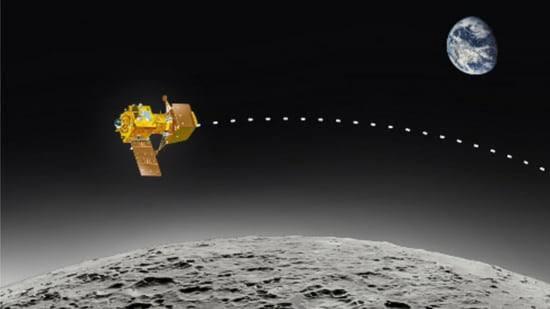ISRO’s Chandrayaan-3 is gearing up for a landmark attempt: a soft landing on the moon. A successful landing would cement India’s place among an elite group of nations achieving this feat.

- 6:10 PM, 23rd August 2023
ISRO Director S. Somanath expressed gratitude towards the team behind Chandrayaan-3, singling out the project director of Chandrayaan-3, ECR Veera Muthuvel, mission operations director Srikanth, and Kalpana. He highlighted the flawless execution of the mission, thanked various teams, including navigation, propulsion, guidance and control, and the Critical Operations Review Committee. Somanath also acknowledged the support from ISRO’s higher management and thanked the Chandrayaan project teams spread across ISRO centers.
Mission Director Srikanth conveyed his pleasure in being a part of Chandrayaan-3. He thanked his team members and senior colleagues for supporting and flawlessly executing the mission operations.
Associate Project Director Kalpana expressed her joy in being a part of Team Chandrayaan. She mentioned the meticulous planning and efforts that went into the mission, thanking everyone, including the Chairman of ISRO and other directors.
Sankaran, from the TUR Rao Satellite Centre, reminisced about the efforts since 2019 and the hurdles they faced. He thanked the entire project team, acknowledging their hard work and dedication. He emphasized that ISRO’s success places a higher responsibility on their shoulders and shared their ambitious plans, including human spaceflight, Venus exploration, and a Mars landing.
In his concluding remarks, S. Somanath conveyed the Prime Minister’s appreciation and thanked everyone, especially senior figures like Kiran Kumar and Mr. Kamalakar Koteswara Rao, for their unwavering support. He emphasized the cumulative achievements from Chandrayaan-1, Chandrayaan-2, and now Chandrayaan-3.
- 6:04 PM, 23rd August 2023
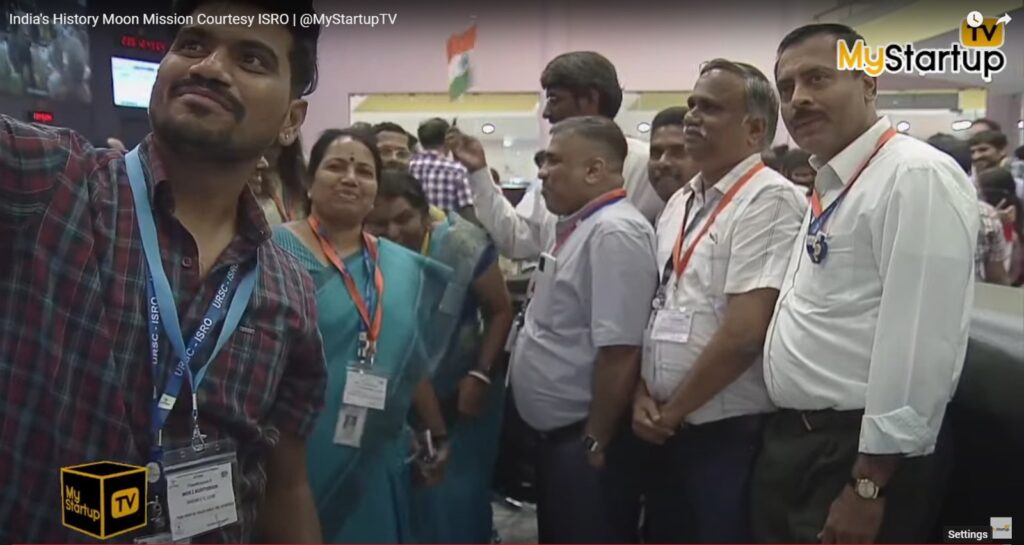
In an unparalleled display of technological prowess and determination, India’s Chandrayaan-3 mission has achieved a soft landing on the Moon, marking a monumental moment for space exploration and for India’s presence in the vast expanse of space. This success comes after the hard-learned lessons from Chandrayaan-2, making the victory even sweeter.
The soft landing demonstrates the persistent efforts of the Indian Space Research Organisation (ISRO) in mastering complex space missions. It showcases India’s advanced capabilities in space technology, navigation, and lunar exploration. Beyond the technical triumph, the Chandrayaan-3 landing has reignited a passion for space exploration among millions. Children and adults alike look up to the sky with dreams renewed and a profound sense of pride.
The data and insights from this mission are expected to contribute significantly to our understanding of the Moon, its resources, and its history. With the successful landing of Chandrayaan-3, India firmly plants its flag on the lunar surface, joining an elite group of space-faring nations and inspiring a new generation of scientists, engineers, and dreamers.
In the annals of space history, Chandrayaan-3 will be remembered not just as a mission that reached the Moon, but as a testament to the indomitable spirit of human pursuit and innovation.
In a tweet, Honourable Prime Minister Narendra Modi expressed his heartfelt best wishes to ISRO, stating, “14th July 2023 will always be etched in golden letters as far as India’s space sector is concerned. Chandrayaan-3, our third lunar mission, will embark on its journey. This remarkable mission will carry the hopes and dreams of our nation.” Stay tuned to MyStartup Life for live updates on this historic event!
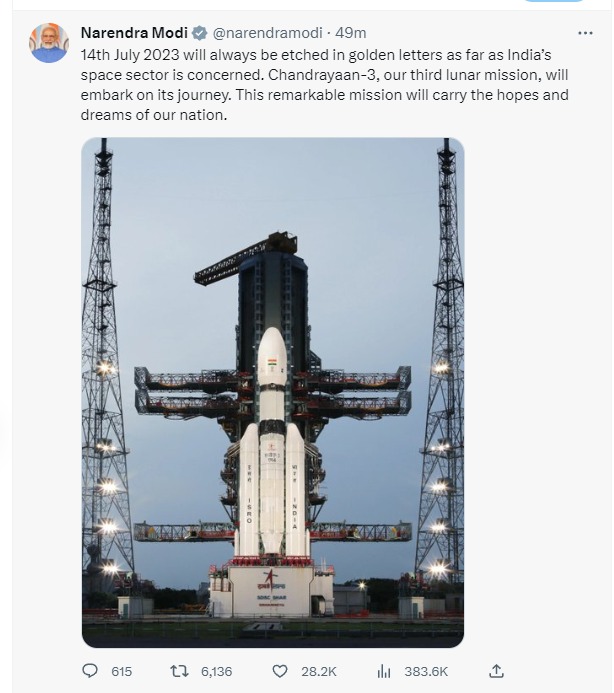
- 02:52 PM, 14th July 2023
Successful Launch of Chandrayaan-3 Marks a Historic Milestone in India’s Space Program
The Indian space program achieved a significant milestone with the successful launch of Chandrayaan-3, embarking on its journey toward the moon. The post-launch event showcased the excitement and pride of the Indian Space Research Organization (ISRO) and the entire ISRO family.
The event highlighted the precision with which Chandrayaan-3 was injected into its intended orbit, a testament to the reliability and capabilities of India’s heaviest launch vehicle, LVM-3. The mission’s success was attributed to years of dedicated effort and hard work.
During the event, key figures were introduced, including the Mission Director, Mr. Mohan Kumar, and the Project Director of LVM-3, who played pivotal roles in the mission’s development. Their leadership and contributions were commended.
Dr. Jitendra Singh, Honorable Minister of State for Science and Technology and Departments of Space and Atomic Energy, expressed gratitude to the ISRO team for their exceptional work, which has brought immense pride to the nation. He acknowledged Prime Minister Narendra Modi’s support in empowering India’s space sector.
Directors from various centers, such as Vikram Sarabhai Space Centre, Liquid Propulsion Systems Centre, UR Rao Satellite Centre, Space Application Centre, and Satish Dhawan Space Centre, were also present. They extended their congratulations to the teams responsible for building the rocket, scientific instruments, and spacecraft.
The event underscored the significance of Chandrayaan-3’s journey to the moon and the upcoming critical phases, including insertion into lunar orbit and the planned soft landing. The teams exhibited confidence in the spacecraft’s capabilities and expressed determination to achieve a successful landing on the lunar surface.
Acknowledgments were made to the industrial partners, small-scale industries, and suppliers who contributed to the mission’s success. The event emphasized the spirit of teamwork, dedication, and prayers that drove the ISRO family throughout the mission’s duration.
Overall, the post-launch event celebrated the successful launch of Chandrayaan-3 and showcased the unwavering commitment and optimism of the entire ISRO family. It marked a significant stride forward in India’s space exploration journey, setting the stage for further achievements in the realm of space technology.
- 02:45 PM, 14th July 2023
Cri Stage performance is normal
- 02:41 PM, 14th July 2023
The third stage started Cryo Engine Ignited
- 02:35 PM,14th July 2023
The Rocket takes off as scheduled on time
- 02:34 PM,14th July 2023
One and a half minutes to go and ISRO will have taken a milestone in the History
- 02:30 PM, 14th July 2023
Phases of Chandrayaan-3 mission
- Pre-launch Phase: Activities and preparations carried out before the rocket launch, including final checks, fueling, and system verifications.
- Launch and Ascent Phase: The phase when the rocket is launched from the ground and ascends into space, propelled by the rocket engines.
- Earth-bound Manoeuvre Phase: Maneuvers performed in Earth’s orbit to position the spacecraft for the next phase.
- Transfer Trajectory Phase: Trajectory adjustments are made to transfer the spacecraft from Earth’s orbit towards the Moon.
- Lunar Orbit Insertion Phase (LOI): The phase when the spacecraft enters the Moon’s orbit and adjusts its trajectory to achieve a stable lunar orbit.
- Moon-bound Manoeuvre Phase: Maneuvers were performed to fine-tune the spacecraft’s trajectory toward the Moon.
- PM and Lunar Module Separation: Separation of the Propulsion Module (PM) and Lunar Module, which are components of the spacecraft.
- De-boost Phase: Reduction of the spacecraft’s velocity and altitude to initiate the descent towards the lunar surface.
- Pre-landing Phase: Preparatory activities conducted before the landing, such as trajectory adjustments and sensor calibrations.
- Landing Phase: The phase when the spacecraft makes contact with the lunar surface, aiming for a controlled landing.
- Normal Phase for Lander and Rover: Operations are carried out in the normal operational mode for the lander and rover on the lunar surface.
- Moon Centric Normal Orbit Phase (100 km circular orbit) – For Propulsion Module: The phase when the Propulsion Module enters a stable circular orbit around the Moon at an altitude of 100 km.
- 02:30 PM, 14th July 2023
Here are important steps in launching any rocket
- Start automatic ground launch sequencer: The software that initiates the final countdown phase of the launch.
- Retract orbiter access arm (T-7 minutes, 30 seconds): The arm that swings back from the launch tower to the crew hatch, allowing for quick crew evacuation if needed.
- Start auxiliary power units (T-5 minutes, 0 seconds): The pilot activates the hydrazine-fueled APUs, which provide hydraulic power to the rocket.
- Arm solid rocket booster range safety safe and arm devices (T-5 minutes, 0 seconds): Mechanical devices are positioned to break the firing chain in the solid rocket booster destruct system.
- Start orbiter aerosurface profile test, followed by main engine gimbal profile test (T-3 minutes, 55 seconds): The rocket’s elevons, body flap, and main engine gimbals are tested using hydraulic power.
- Retract gaseous oxygen vent arm, or “beanie cap” (T-2 minutes, 55 seconds): An arm carrying a vent duct is retracted to release vented gaseous oxygen away from the rocket.
- Crew members close and lock their visors (T-2 minutes, 0 seconds): The crew seals their launch and entry suits to protect against potential bird strikes.
- Rocket transfers from ground to internal power (T-50 seconds): The power source switches from external to internal power supply.
- Ground launch sequencer is go for auto sequence start (T-31 seconds): If all is well, the onboard launch sequencer starts controlling the final seconds of the countdown.
- Activate launch pad sound suppression system (T-16 seconds): Water is released onto the launch pad to suppress acoustic vibrations caused by the rocket’s engines.
- Activate main engine hydrogen burnoff system (T-10 seconds): Ignition of sparklers burns off excess hydrogen vented from the engines.
- Main engine start (T-6.6 seconds): The main engines ignite, generating thrust for liftoff.
These steps outline the pre-launch preparations and key actions leading up to the launch of a rocket.
- 02:00 PM, 14th July 2023
ISRO Started Live and explaining
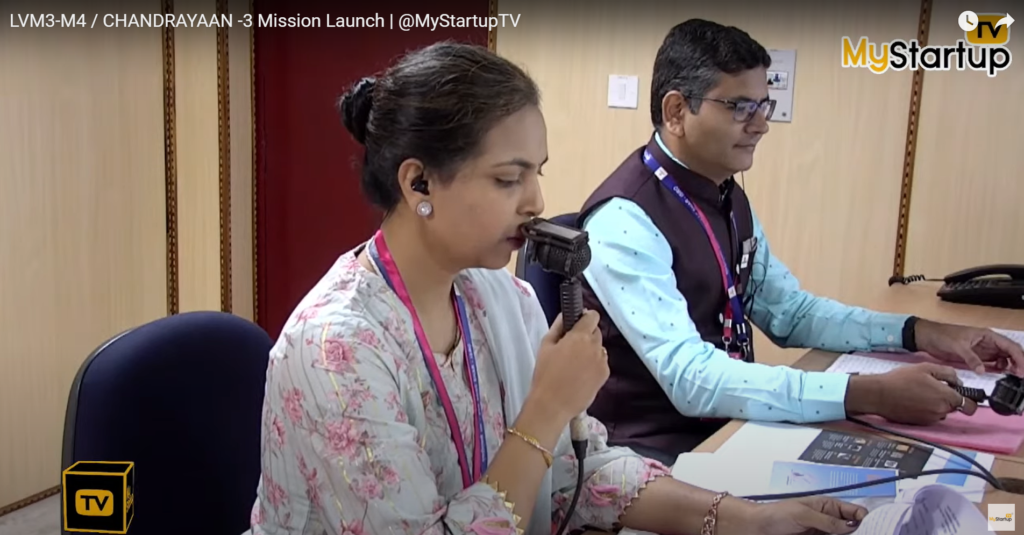
ISRO Chairman S Somanath has made his way to mission control in preparation for the launch of the Chandrayaan-3 mission. Scientists are conducting the final verifications on the rocket as the countdown progresses towards the scheduled launch time of 14:35:17 (2.35 PM IST).
Heading the mission as the director for LVM3-M4/Chandrayaan-3 is S Mohana Kumar, a distinguished scientist from the Vikram Sarabhai Space Centre. Previously, he served as the director for the successful commercial launch of the One Web India 2 satellites during the LVM3-M3 mission.
- 01:30 PM, 14th July 2023
Way Back on 18th Nov 2022, Indian Private Space Company SkyRoot Achieved Historic Milestone with a Successful Rocket Launch
The Indian space program achieved another significant milestone as a private space company successfully completed its lift-off trials. SkyRoot, an Indian space startup, demonstrated its capability to achieve lift-off with its rocket named Vikram-S. It was the first time an Indian private space company accomplished such a feat. Over the past decade, many private companies globally have ventured into the space program, with American company SpaceX leading the way. In India, the advent of the startup culture, coupled with support from the government, led to the emergence of numerous Indian space startups.
India’s space program has faced and overcome multiple challenges throughout its journey. It is well-known that Indian scientists used to carry rockets on bicycles for testing. From India’s first satellite, Aryabhatta, released in 1975 to EOS-04 in 2022, India’s space adventure spanned 47 years and involved the launch of over 120 satellites.
In 2018, former engineers and scientists from ISRO collectively established Skyroot, an aerospace industry. Today, they successfully launched Vikram-S, India’s first private rocket. The rocket reached an altitude of 81.5 km, carrying three payloads weighing 83 kg. After a duration of 4.84 minutes, it safely splashed down into the Bay of Bengal, approximately 115.6 km from Sriharikota. The announcement by ISRO leader S. Somanath, stating that 100 startups have registered to work on space tech, hints at the significant role the private sector will play in the future of space technology.
India has witnessed year-on-year growth in space tech, achieving remarkable milestones with missions like Chandrayaan-1, Chandrayaan-2, and Mars Orbiter Mission. While these missions were government-organized, today marks a new chapter where the Indian private sector showcases its capabilities in space missions.
The story of India’s first rocket release is widely recognized. From India’s first satellite Aryabhatta released in 1975 to EOS-04 in 2022, India’s space adventure spanned 47 years and involved the launch of over 120 satellites. The country has effectively launched a diverse range of satellites, with ISRO playing a key role in their design, construction, launch, and operation. Today, another rocket lifted off from Sriharikota, marking the efficient entry of the Indian private sector into the realm of space tech. Former engineers and scientists from ISRO collectively founded Skyroot in 2018, establishing an aerospace industry that successfully launched Vikram-S, India’s first private rocket. It reached an altitude of 81.5 km, carrying three payloads weighing 83 kg, before splashing down into the Bay of Bengal after a duration of 4.84 minutes. The announcement by ISRO leader S. Somanath, stating that 100 startups have registered to work on space tech, indicates the significant role the private sector will play in shaping the future of space technology.
- 01:00 PM, 14th July 2023
Since its establishment, the Indian Space Research Organisation (ISRO) has spearheaded a remarkable journey in the Indian space sector. From humble beginnings to groundbreaking achievements, ISRO has consistently pushed the boundaries of space technology, putting India on the global map of space exploration. Let’s take a glimpse into the highlights of India’s space sector, reflecting the tireless efforts and groundbreaking milestones that have shaped the country’s journey in space.
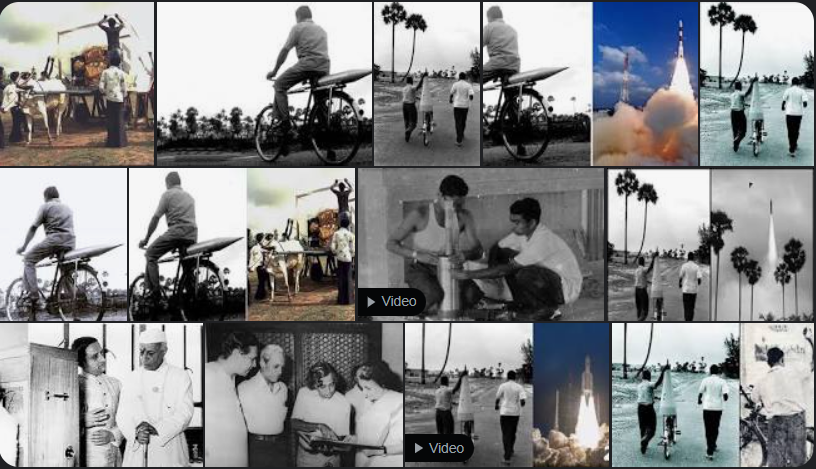
- 1969: ISRO was formed under the Department of Atomic Energy (DAE) with Dr. Vikram Sarabhai as its founding father.
- 1975: India’s first satellite, Aryabhatta, was launched, making India the sixth country to have a satellite in space.
- 1980: Rohini-1, India’s first satellite to be placed in orbit by an Indian-made launch vehicle (SLV-3), was successfully launched.
- 2008: ISRO’s Chandrayaan-1, India’s first lunar mission, was launched and successfully detected water molecules on the moon’s surface.
- 2013: India’s first interplanetary mission, Mars Orbiter Mission (Mangalyaan), was launched, making India the first Asian country to reach Mars.
- 2014: Mars Orbiter Mission achieved its goal of entering Mars orbit, making India the first country to do so on its first attempt.
- 2019: Chandrayaan-2, India’s second lunar mission, aimed to land a rover on the Moon’s surface. Although the landing was not successful, the orbiter continues to operate and collect valuable data.
- 2020: ISRO successfully launched the Polar Satellite Launch Vehicle (PSLV) C49 mission, deploying the EOS-01 Earth observation satellite along with nine customer satellites.
- 2021: ISRO’s successful launch of the GSLV-F10 mission placed the EOS-03 geostationary satellite into orbit, enhancing India’s communication capabilities.
- 2022: ISRO successfully launched the GSAT-30 communication satellite, further bolstering India’s communication infrastructure.
These highlights showcase India’s advancements in space technology and its significant contributions to space exploration, satellite deployment, lunar missions, and interplanetary missions.
- 12:30 PM, 14th July 2023
The Chandrayaan-3 mission will ride aboard ISRO’s most powerful rocket, the Launch Vehicle Mark-III. This rocket is equipped with two S2000 solid rocket boosters, providing the necessary thrust for liftoff. Once the solid boosters separate, the L110 liquid stage will take over propulsion duties. Following the separation of the liquid stage, the CE25 cryogenic stage will propel the vehicle forward.
Chandrayaan-3 serves as a successor to the Chandrayaan-2 mission, which faced setbacks during its final stages. This upcoming mission marks India’s second endeavor to achieve a soft landing on the Moon, a highly anticipated feat watched by the global community. We will provide an updated link to ISRO’s live stream on this page once it becomes available.


